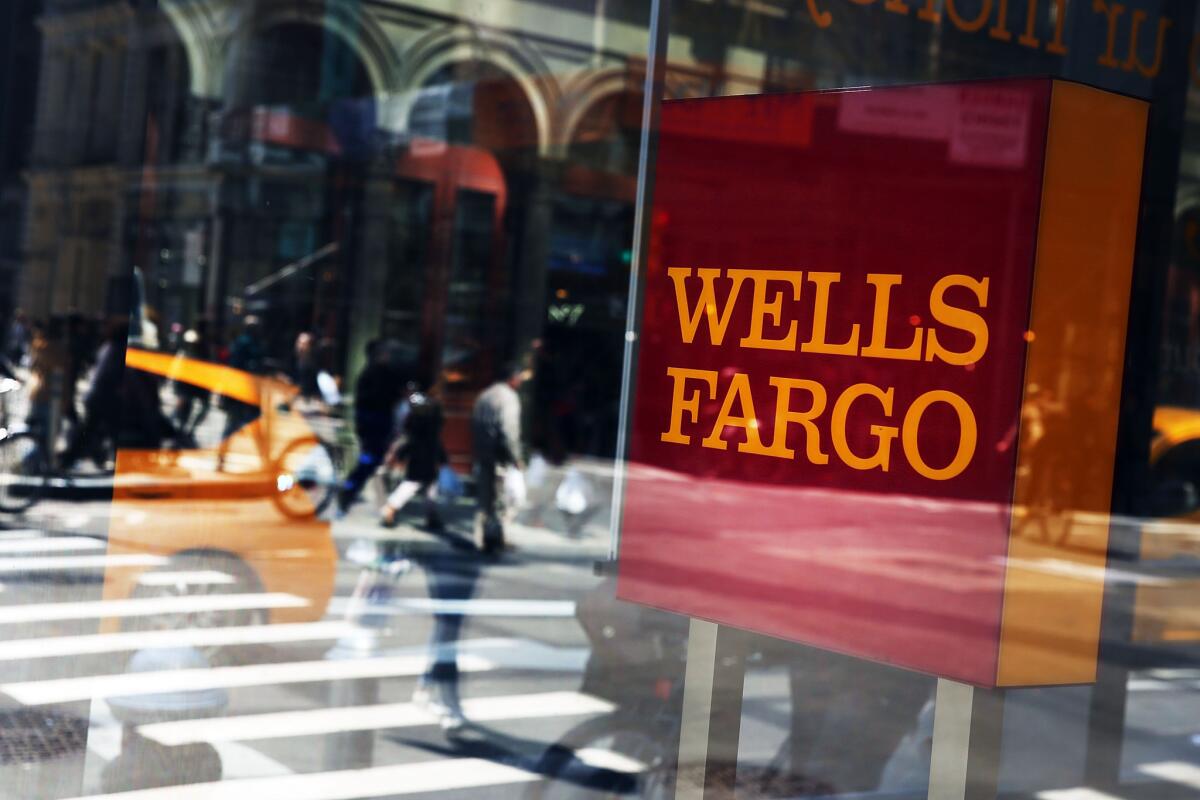How regulators plan to use pay rules to rein in risk-taking by big banks

Pedestrians pass a Wells Fargo bank branch in Lower Manhattan on April 15 in New York City.
Federal financial regulators moved forward this week on new rules for how banks pay their executives.
No, they're not aimed at addressing the wealth gap or cutting bankers' multimillion dollar salaries. Rather, the proposed rules, tied to the Dodd-Frank Wall Street Reform Act of 2010, aim to rein in the kind of excessive risk-taking that helped lead to the financial crisis.
Here's what you need to know.
Who does this affect?
The key elements of the proposed rules would apply to executives and some key employees of all banks, credit unions or wealth-management firms with more than $50 billion in assets. That means thousands of small banks and credit unions would be exempt, but the rules would affect all of the nation's major banks, including Wells Fargo, Bank of America and JPMorgan Chase. Also affected by the rules: Fannie Mae and Freddie Mac, the two firms that buy and securitize many of the nation's mortgage loans.
See the most-read stories this hour >>
Does it cap salaries?
No. In fact, the rules don't have to do with salaries at all. Rather, they would apply only to incentive pay -- compensation based on performance. The notion is that performance-based bonuses and other types of incentive pay, if structured in the wrong way, can encourage executives to take unnecessary or improper risks. For instance, during the subprime mortgage boom, many banks had pay plans that gave loan officers and mortgage brokers an incentive to write more loans and more high-interest loans, regardless of the likelihood that those loans would default.
What's the goal?
To make banks and other financial firms more stable -- that is, less likely to fail or to need a government bailout -- by getting them to take less risk or cut down on overly generous compensation. The Federal Deposit Insurance Corp. found that, among a group of 65 banks that failed between 2007 and 2015, more than one-quarter of them had problems with their incentive-pay packages.
What will change?
Under the proposed rules, the nation's biggest banks would have to set aside 60% of their executives' incentive pay for at least four years. Many already wait three years. Smaller banks would have to set aside 40% to 50% of incentive pay for three years. During those years, banks could cut the incentives, holding executives accountable if financial results go south. What's more, even after those waiting periods, executives could have to repay some bonuses if they're found to have committed fraud or other misconduct.
SIGN UP for the free California Inc. business newsletter >>
When will these rules take effect?
Financial regulators were mandated to create rules on incentive pay by the Dodd-Frank Act, but they're at least months away from becoming a reality. The current proposal must be approved by a handful of regulatory agencies. So far, only one, the National Credit Union Administration -- the equivalent of the FDIC for credit unions -- has done so.
MORE BUSINESS NEWS
What you need to know about the Uber settlement
Inside the business of entertainment
The Wide Shot brings you news, analysis and insights on everything from streaming wars to production — and what it all means for the future.
You may occasionally receive promotional content from the Los Angeles Times.








